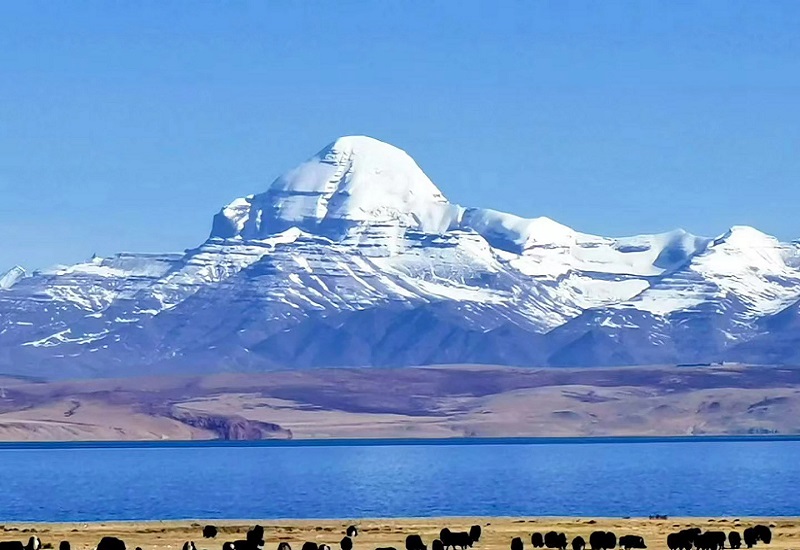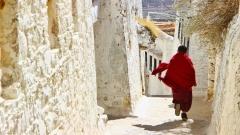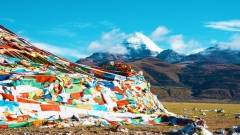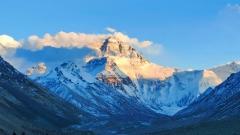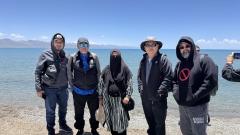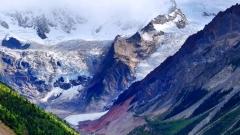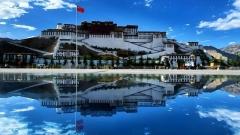Lake Manasarovar is one of those places on Earth that seems to have been designed to stop you in your tracks. Blue like a polished jewel, ringed by snow peaks and ancient monasteries, and steeped in myths that span Hinduism, Buddhism, Jainism and the Bon tradition — Manasarovar is both a photographer’s dream and a pilgrimage you’ll feel in your bones.
Where Is Lake Manasarovar and Why It’s Sacred
Lake Manasarovar sits in Burang County (Purang), in western Tibet’s Ngari Prefecture — about 20 km southeast of the holy Mount Kailash. At an elevation of roughly 4,583 meters (15,036 ft) above sea level, Manasarovar is one of the world’s highest freshwater lakes and covers an area of approximately 412 km². The lake’s deep, crystalline waters and its location near the sources of major rivers (Indus, Sutlej, Brahmaputra and Karnali) make it geographically important as well as spiritually resonant.

Lake Manasarovar Location Map
For millennia pilgrims have believed Manasarovar’s waters purify the body and mind: bathing or drinking from the lake is said to wash away sin and negative karma; performing a kora (a ritual circuit) brings merit and blessings. The lake’s ancient names and the stories around it — from “Matri Tso” (Dragon King in the Bon tradition) to the Sanskrit-Tibetan Manasarovar — reflect centuries of religious interaction and changing cultural landscapes.
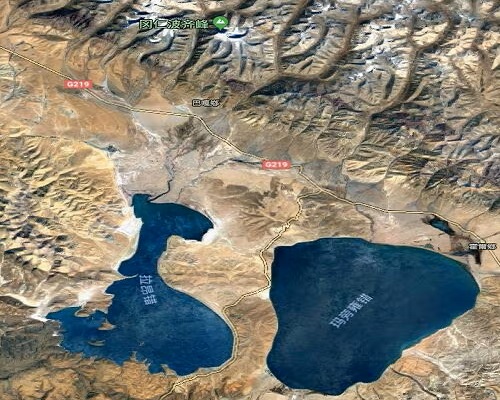
Lake Manasarovar Map
What to Expect at Manasarovar: Landscape & Atmosphere
Manasarovar’s northern section is broader; the lake’s deepest point exceeds 70 meters in places. On calm mornings the water mirrors the sky and the distant snow line of Kailash; winds can whip up sudden waves that turn the color from clear turquoise to stormy indigo. Wildlife is modest but charming — wild asses, herds of Tibetan yaks, antelopes and highland birds are often seen grazing the lakeshore.
Around the lake you’ll find five significant monasteries — Chiu (Sparrow) Monastery, Langbona, Seralung, Trupo and Gossul — each perched with its own view and rituals. These tiny spiritual hubs serve pilgrims and offer a glimpse into living Tibetan monastic life.
Highlights: What You Must See and Do at Manasarovar
1) Circumambulate the Lake (The 100-km Kora)
The traditional kora around Manasarovar is about 100 km and is a core pilgrimage for many visitors. Some pilgrims perform prostrations or stop at sacred shrines along the way; most visitors complete the full circuit over several days. The route weaves between desolate plains, monastery outposts and rivers that feed the lake, offering a rhythm of exertion and meditation you won’t forget.
2) Visit the Five Monasteries
Each monastery offers a different vantage point and atmosphere. Chiu Monastery, perched on a crag to the northwest, gives panoramic views over the lake. Spending time in even one of these monasteries lets you observe rituals, meet pilgrims and see centuries-old art and architecture.
3) See Rakshas Tal (La’ang Tso)
About 10 km from Jiwu Temple (on the western shore), Rakshas Tal is a saltwater sister-lake to Manasarovar. Its darker, mythic waters and longer ice seasons make for dramatic shoots, especially at sunrise or during thaw. The contrast between the two lakes — sweet freshwater vs. briny Rakshas — is striking.
4) Capture Sunrise and Sunset Over Kailash
From Jiwu Temple and Chiu’s hilltops you can frame Mount Kailash behind the lake. Sunrise paints the peaks in tender gold; in certain seasons mist can wrap Kailash and the lake in a soft veil that’s uniquely photogenic.

Chiu (Sparrow) Monastery
Best Time to Visit Manasarovar
The window to plan around is late April to October, with the most reliable months being May–June and September–October. During these months skies tend to be clear, temperatures manageable, and the pilgrimage season is active but not overcrowded. Summer (July–August) brings monsoon moisture to western Tibet — that can mean sudden showers but also richer oxygen and dramatic cloudscapes around Mount Kailash. Ngari winters are harsh; travel in winter is not recommended because of extreme cold and limited services.
Quick weather snapshot (April–October):
| Month | Max Temp | Min Temp | Clear Days |
|---|---|---|---|
| April | 12 °C | -10.3 °C | 27 |
| May | 15 °C | -6.8 °C | 28 |
| June | 19 °C | -1.9 °C | 28 |
| July | 22 °C | 1 °C | 24 |
| August | 23 °C | 0.8 °C | 26 |
| September | 20 °C | -2.8 °C | 28 |
| October | 19 °C | -9.8 °C | 29 |
How to Get to Lake Manasarovar
There are three common ways to reach Manasarovar — overland from Lhasa, overland from Kathmandu (via Gyirong border), or by flying to Ngari Gunsa (Ali Gunsa) from Lhasa.
Overland from Lhasa (Recommended for the Experience)
This is the classic route that follows the Sichuan–Tibet/ G318 artery west and then northwest through Shigatse, Saga and into Ngari. Expect long drives, high passes, sweeping plateaus and a total round trip of roughly 3,200+ km that often takes about 15 days for a comfortable itinerary with acclimatization stops. This route offers time to acclimatize, stop at intermediate sights (like Everest base camp if you detour), and witness the changing landscape.
Overland from Kathmandu via Gyirong
From Kathmandu you drive to the Nepal–China Gyirong border (≈120 km), then continue across the plateau toward Manasarovar (another ≈590–600 km). This route is shorter in total distance from Kathmandu and offers a fascinating cross-border cultural transition. Expect a long day of driving after the border and plan for permits and border logistics.
Fly to Ngari Gunsa (Ali Gunsa) from Lhasa
If time is tight, take a morning flight from Lhasa Gonggar to Ngari Gunsa Airport (Ali Gunsa). The flight is about two hours and is the fastest way to access the Manasarovar region. Flights are limited and more expensive, and you’ll still need ground transport from Gunsa to the lake; but this option reduces prolonged road fatigue and can be ideal for shorter itineraries.
Permits, Tickets & Fees for Manasarovar
A combined admission ticket for Mount Kailash and Lake Manasarovar is commonly sold as a single “Unicom” pass; the individual tickets can be purchased separately at around CNY 150 each (Mount Kailash / Manasarovar), or CNY 300 for a combined pass — ticket validity is normally several days and can vary by season. Always confirm current fees with your tour operator because policies can change.
You’ll also need a Chinese travel permit for Tibet; foreign visitors must book travel through a licensed Chinese tour operator and carry the relevant permits. If crossing overland from Nepal, make sure border procedures, group requirements, and visa documents are arranged in advance.
Accommodation & Food at Manasarovar
Darchen is the nearest town to Mount Kailash and Manasarovar (about 40 km from the lake) and offers the widest range of hotels and restaurants — from basic guesthouses to more comfortable options like Castle Hotel and Himalaya Hotel (many hotels can offer a view of Kailash on clear days). Guesthouse accommodation near the monasteries around the lake is very basic with limited services; if doing the full kora you should be prepared for simple bedding and shared facilities.
Food in Darchen and the roadside tea houses will be Tibetan, Sichuan and Nepalese influenced — yak butter tea, tsampa (barley flour), noodle soups, and simple stir fries. Along the kora route, bring high-energy snacks (nuts, chocolate, dried fruit, energy bars) because shops are sparse.
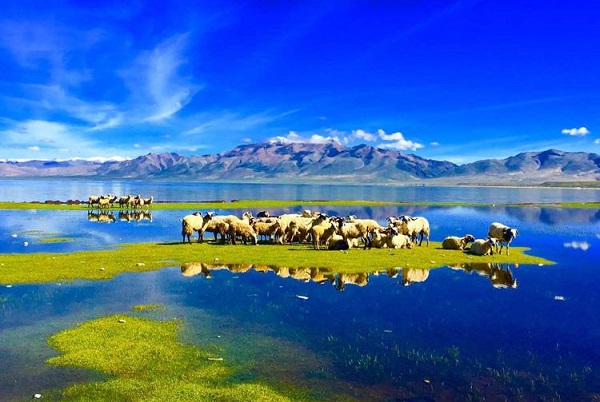
Health & Altitude: Safety First
At over 4,500 meters altitude, acclimatization is essential. Spend at least 2–3 days at intermediate altitudes (Lhasa and Shigatse stops are common) before pushing to Ngari. Hydrate, avoid alcohol, eat lightly, and consider consultation with your doctor about acetazolamide (Diamox) if you’re prone to altitude symptoms. Common sense precautions — rest when needed, travel with a well-equipped guide and a reliable vehicle, and carry a small medical kit — are non-negotiable.
What to Pack for Manasarovar
Clothing
- Thermal base layers and multiple thin insulating layers (aim for 4–5 layers).
- A warm down or thick fleece jacket (nights are cold).
- Waterproof, windproof outer shell.
- Good hiking socks and sturdy waterproof hiking boots.
- Gloves, warm hat, and sunglasses.
Gear & Essentials
- Trekking poles (very helpful on rough stretches).
- Sunblock (high UV at altitude), lip balm, moisturizer.
- Personal toilet paper and wet wipes (guesthouses may not supply).
- High-energy snacks: trail mix, chocolate, dried fruits, granola.
- Reusable water bottle and purification tablets (if you plan to refill).
- Basic first-aid kit and altitude medication (if prescribed).
Photography: Best Spots & Tips for Manasarovar
Top photo spots: Jiwu Temple (western bank), Chiu Monastery (northwest crag), and Rakshas Tal. For dramatic photos:
- Sunrise at Jiwu: climb the small hill beside the temple to catch Kailash backlit over the lake.
- Golden hour at Chiu: late afternoon light softens the peaks and adds texture to the water.
- Rakshas Tal: capture the contrast between the salt lake and the glassy Monasarovar water, especially during ice melt.
- Use a polarizing filter to reduce glare and enrich blues; keep camera batteries warm (cold drains batteries faster).
Cultural Etiquette & Practical Tips for Manasarovar
- Dress modestly in sacred sites; follow monastery rules about photography.
- When walking a kora, move clockwise unless a sign or local custom indicates otherwise.
- Remove hats and speak softly inside temples. Offer donations with both hands if you wish to give.
- Respect local rituals and pilgrims — many are performing deeply personal religious acts.
- Bring small local currency (CNY) for entrance fees, donations and local purchases.
Ready to Go to Lake Manasarovar? A Short Checklist
- Book permits & transport through a reliable operator (Like China Dragon Travel).
- Pack layers, sun protection, and snacks.
- Bring physical copies of passports, permits and emergency contacts.
- Plan acclimatization days; listen to your body.
- Carry cash for remote purchases and temple donations.
If you’d like, China Dragon Travel can design a fully guided Manasarovar + Kailash package that includes permits, airport transfers, experienced local guides, vehicle support, and responsible-travel measures so you can focus on the pilgrimage and the photos. We tailor itineraries for solo travellers, small groups, and photographers — and we’ll handle permits, acclimatization scheduling and on-route support so your journey is safe, meaningful and unforgettable.




